It doesn’t matter how you got them – foraging, farming, or purchasing – having too many blueberries isn’t a problem; it’s a gift. Blueberries are useful for pretty much anything, and an abundance of them just means an abundance of joy for months to come. Trust us. Today, we are going to look at 11 of the best ways to make great use of a huge blueberry harvest so that you don’t let any berry go to waste. From pickling to popsicling (we made that up), there’s at least one or two ways you can use these delectable treats. Let’s get started!
Extra Blueberries?
If you have a blueberry bush (or bushes) near you, you’ve probably seen more than your fair share of blueberries hit the ground, only to nourish the earth and not someone’s belly. That’s all well and good, but gathering them is a great way to get some free treats and add to your homesteading vibes.
When they come into season, there can be literal pounds of blueberries just waiting to be used and only a few days to use them. Once they come off the branch, time starts ticking! Here are some of our favorite ways to use the extra harvest this season (and in the years to come).
11 Ways to Use Extra Blueberries
1. Freeze Them For A Smoothie
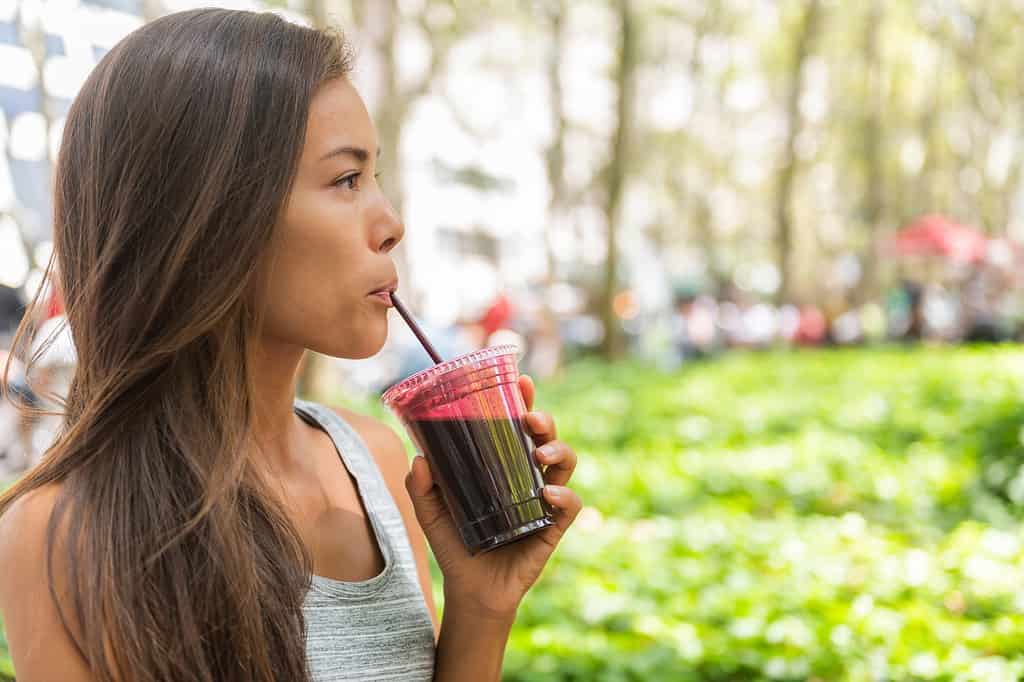
Blueberries may just be a smoothie’s best friend.
©Maridav/Shutterstock.com
One of the easiest and most delicious ways to use up a lot of blueberries is to freeze them for smoothies. Frozen blueberries add a wonderful color and taste to literally any smoothie, and once frozen, they can keep for a very long time. Here’s how you can freeze blueberries to ensure you save their quality:
- Wash the blueberries with cold water and gently dry them off.
- Spread the blueberries in a single layer on a baking sheet lined with parchment paper. Make sure they are not touching each other so they don’t stick and tear.
- Place the baking sheet in the freezer for at least an hour or until the blueberries are completely frozen.
- Transfer the frozen blueberries to a freezer-safe bag or container. Label it with the date and use it within six months.
If you are really looking to cut time, you could just wash, dry, and dump them into a bag, but letting them freeze individually first keeps their shape and prevents massive clumps of exploded blueberries. You can use frozen blueberries in place of most baked recipes; plus, you can just add a handful to some yogurt or milk (or alternative) in a blender and have incredibly fresh smoothies on demand.
2. Make a Jam or Jelly
Another way to use a huge blueberry surplus is to make a jam or jelly. The main difference between jam and jelly is that jam contains pieces of fruit, while jelly is made from strained fruit juice. Both jam and jelly are made by cooking fruit with sugar and pectin; the process for each is just slightly different. Generally, a jam or fruit preserve is going to be a little simpler.
Here are the basic steps to make blueberry jam:
- Wash and dry the jars and lids. Sterilize them by boiling them in water for 10 minutes.
- Wash the blueberries and mash them slightly in a large pot. Add the sugar, lemon juice, and pectin, and bring the mixture to a boil over medium-high heat, stirring constantly.
- Boil the mixture for about 15 minutes or until it reaches 220°F on a candy thermometer. Skim off any foam that forms on the surface.
- Place the hot mash into the hot jars and clean them off, then screw on the lids.
- Process the jars in a boiling water bath for 10 minutes. Remove the jars and let them cool completely. Check the seals and store the jam in a cool, dark place for up to a year.
If you don’t want a shelf-stable jam, you can just place the mash into the fridge in a jar and use it within a month or so, skipping the secondary processing.
To make blueberry jelly, you will need fresh or frozen blueberries, water, sugar, lemon juice, and liquid or powdered pectin, plus a way to strain it (cheesecloth or a mesh strainer will be fine). You’ll also need some jars and lids. Here are the basic steps to make blueberry jelly:
- Sterilize your tools by boiling them in water for 10 minutes.
- Wash the blueberries and place them in a large pot with water. Crush them slightly and bring them to a boil over medium-high heat. Cook for about 10 minutes to get the juice out.
- Strain the juice through a cheesecloth or a fine-mesh strainer into a bowl, discarding the pulp (this is where jams and jellies differ).
- Measure the juice and return it to the pot. Add an equal amount of sugar, plus lemon juice, and pectin, and bring the mixture to a boil over high heat, stirring constantly.
- Boil the mixture for about 5 minutes or until it reaches 220°F on a candy thermometer. Skim off any foam that forms on the surface.
- Ladle the hot jelly into the hot jars, leaving 1/4 inch of headspace. Wipe the rims of the jars with a damp cloth and screw on the lids.
- Process the jars in a boiling water bath for 10 minutes. Remove the jars and let them cool completely. Check the seals and store the jelly in a cool, dark place for up to a year.
Jams and jellies can be made in huge batches and are perfect gifts for family during holidays or as a snack throughout the year.
3. Muddle Them in a Cocktail
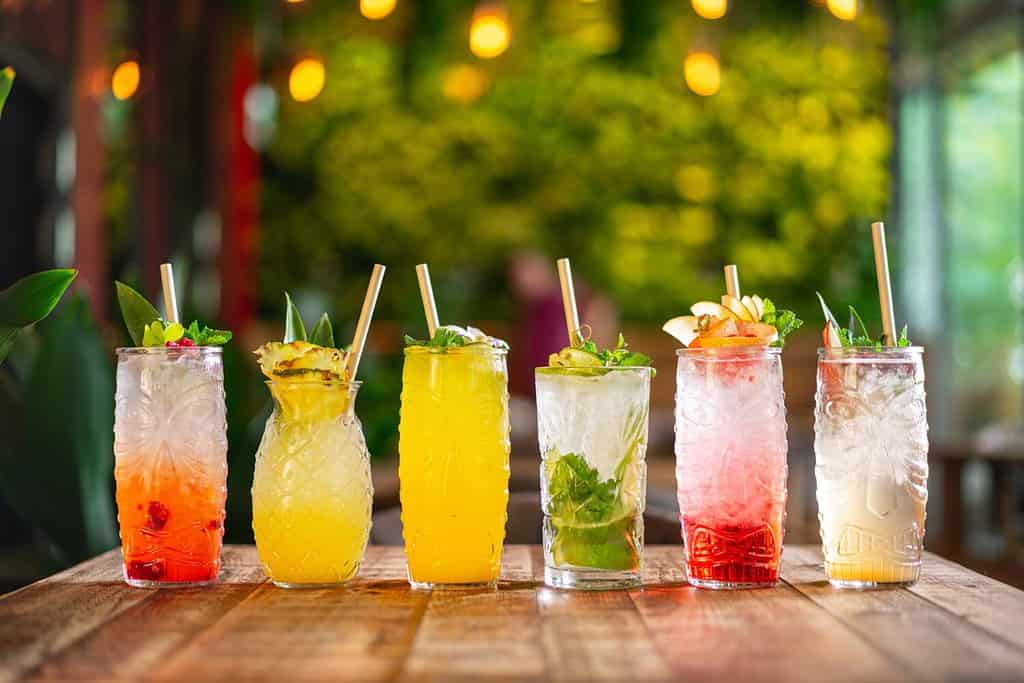
You can add blueberries to all sorts of cocktails for tons of variety.
©Mateusz Gzik/Shutterstock.com
“Muddling” is a term that basically just means “mashing”, but it’s usually used as a reference to cocktails. Most items are muddled using a technique that involves crushing ingredients with a wooden or metal tool (called a muddler), or a spoon, to release their juices and oils. Muddling helps to infuse the flavor of the ingredients into the liquid, thereby creating a more complex and balanced taste.
Mojitos, for example, incorporate muddled ingredients, and blueberries could make a fantastic addition.
Blueberry mojito:
- In a cocktail shaker or glass, muddle 5-8 fresh blueberries and 6 mint leaves.
- Add 2 ounces of white rum, 1 ounce of fresh lime juice, 1/2 ounce of simple syrup, and fill the shaker with ice. Shake!
- Strain the drink into a glass filled with ice and top with club soda.
For extra points, add some blueberries as a garnish on top!
4. Make a Syrup
Syrups are great for drinks, cocktails, and even breakfast foods! Blueberry syrup is probably one of the more commonly made ones, and there’s a reason it’s so popular:
- In a small pot, combine equal parts sugar and water.
- Bring the mixture to a boil over medium-high heat, stirring occasionally to dissolve the sugar.
- Add fresh or frozen blueberries and reduce the heat to medium-low. Simmer for about 10 minutes or until the blueberries are soft and the syrup is slightly thickened. Add some lemon juice as a preservative and for some acid. You can also just add some blueberry juice instead of whole blueberries for a super smooth syrup.
- You can either leave the blueberries whole or mash them with a fork or a potato masher to release more juice and flavor. You can also blend the syrup with an immersion blender or a food processor for a smoother consistency.
- Strain the syrup through a fine-mesh strainer or a cheesecloth if you want to remove the skins and seeds. You can also skip this step if you don’t mind some texture in your syrup.
- Let the syrup cool completely before transferring it to a jar or a bottle. Store the syrup in the refrigerator for up to a month or in the freezer for up to six months.
5. Use Them in Baking
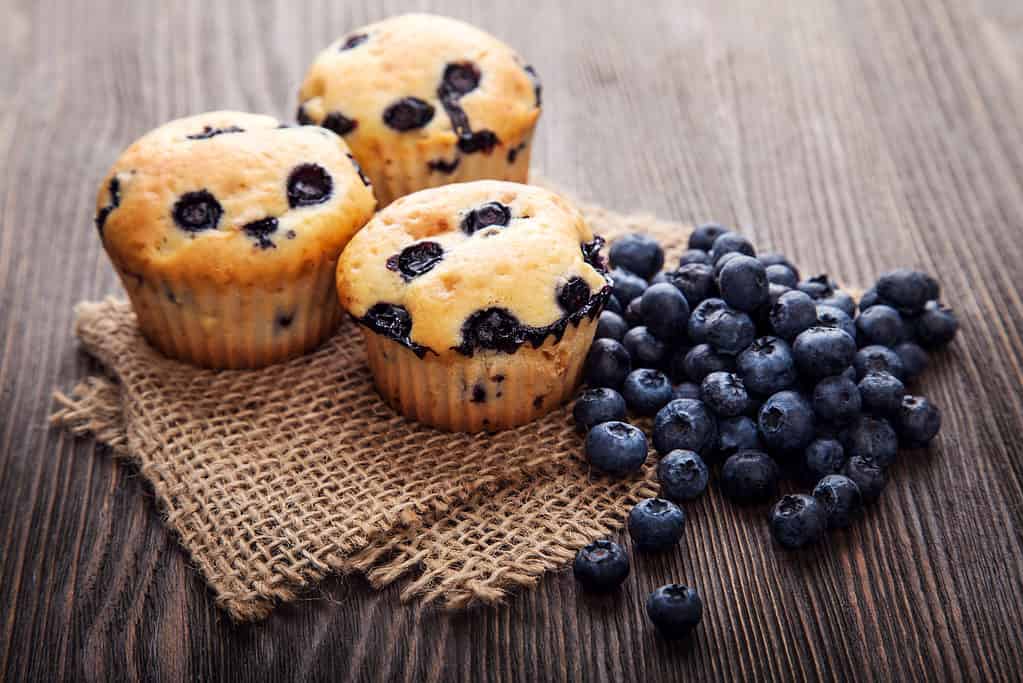
Is there anything more classic than a blueberry muffin? You can use blueberries for all sorts of baked goods.
©Chepko Danil Vitalevich/Shutterstock.com
It’s hard to go into a bakery and not find something made with blueberries. There are pancakes, muffins, scones, pies, gallete, and so much more. We won’t get into the details of each one, but googling pretty much any pastry or baked goods you desire and then adding “with blueberries” should give you all the results you need.
6. Make Fruity Popsicles
Fruity popsicles are a wonderfully refreshing way to enjoy your blueberries. In addition, it’s easy for kids to join in on this activity. You only need a few ingredients and some popsicle molds to create your own homemade popsicles. The most basic ones are made by combining blueberries with other fruits or juices and just popping them in the freezer, but you can also get a little more complicated and add dairy or other items. For example, you can make blueberry yogurt popsicles (creamy), blueberry basil popsicles (interesting), or blueberry lemonade popsicles (pool day, anyone?).
7. Infuse a Liquor
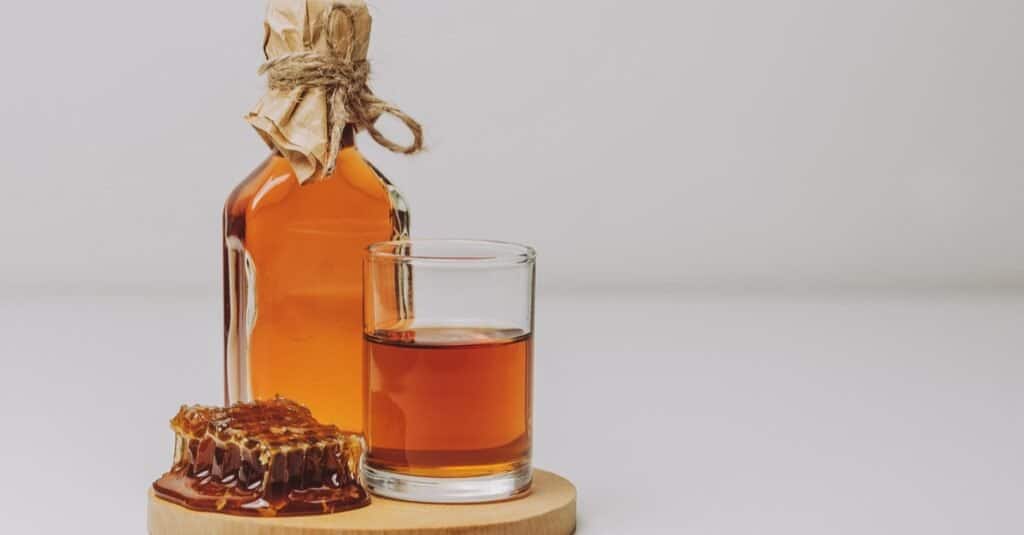
Infusing liquors with flavors has been happening for a very long time, even with blueberries!
©A. Aleksandravicius/Shutterstock.com
Infusing liquor sounds fancy, but it’s actually one of the easiest things to do. You can make your own blueberry-flavored liquor by soaking blueberries in vodka, rum, brandy, or gin for a few weeks or months, drawing out all of that flavor. The result is a fruity and aromatic liquor that you can enjoy on its own or in cocktails. Some liquors lend themselves to go better with blueberry than others, so just use your best judgment here (looking at you, Malort).
After the wait is over, just strain the blueberries and debris out with a cheesecloth. You can then use the liquor with other additives and ingredients to make something truly unique. How about a whipped cream vodka + blueberry-infused vodka and some rootbeer or a frozen blueberry mudslide?
8. Make a Fruit Salad
Fruit salad? Yeah, we know what you just sang in your head. We did too.
Who doesn’t love a fruit salad? Here, you have a ton of ways to experiment. Just take some of your washed blueberries and toss them in with some fruits, with the most common pairings being bananas, strawberries, grapes, or apples. Common doesn’t have the be the case, however! You can literally do anything here. You can also just add blueberries to a traditional salad and make something more exciting. A walnut, feta, and arugula salad with balsamic vinaigrette and some blueberries on top? Easy.
9. Eat Them By The Handful
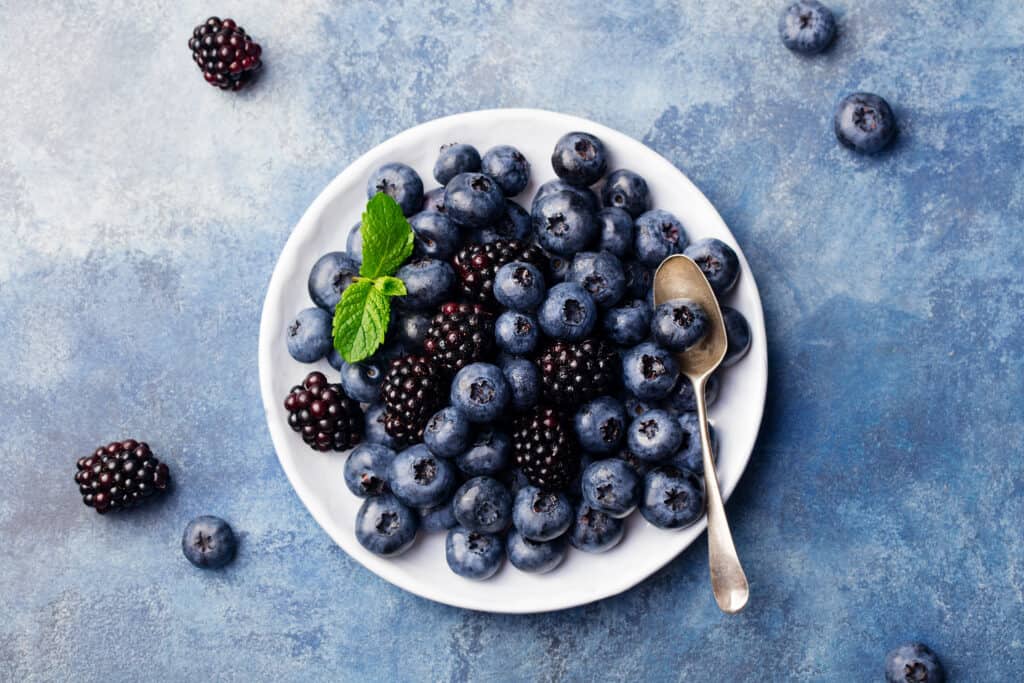
There’s nothing wrong with just eating as many blueberries as you can.
©iStock.com/AnnaPustynnikova
No holds barred, nothing off limits. Literally, just get a bowl, get some friends, put the Wiggles on the television, and just handful after handful go to town on those blueberries. Channel your inner black bear and stock up for the winter. Go ahead; you deserve to feel like a kid again.
If you’re still a bit out of touch with your inner bear, a simple bowl with some whipped cream or yogurt is also fantastic (especially for breakfast or dessert).
10. Stain Cloth and Clothes
Want a great project that’s also sustainable and fun?
You can stain clothes and clothes with blueberries by following some general steps that involve boiling, straining, soaking, rinsing, washing, and drying. Blueberries produce a purple-blue dye that can vary in shade depending on the type of fabric, the amount of blueberries, and the mordant used. A mordant is a substance that helps the dye bond to the fabric and makes it more colorfast.
On hand, you’ll need blueberries, water, vinegar, salt, a large pot, a colander or a cheesecloth, and some cloth, of course. Generally, natural fibers work best for this as they are able to take in the dye better than something like polyester. Also, know that blueberries (and berries in general) are considered anthocyanins, and anthocyanins fade in sunlight. This can still be really pretty. Just be aware that if you are looking for Cookie-Monster Blue, this probably isn’t the right move.
11. Perfectly Pickled
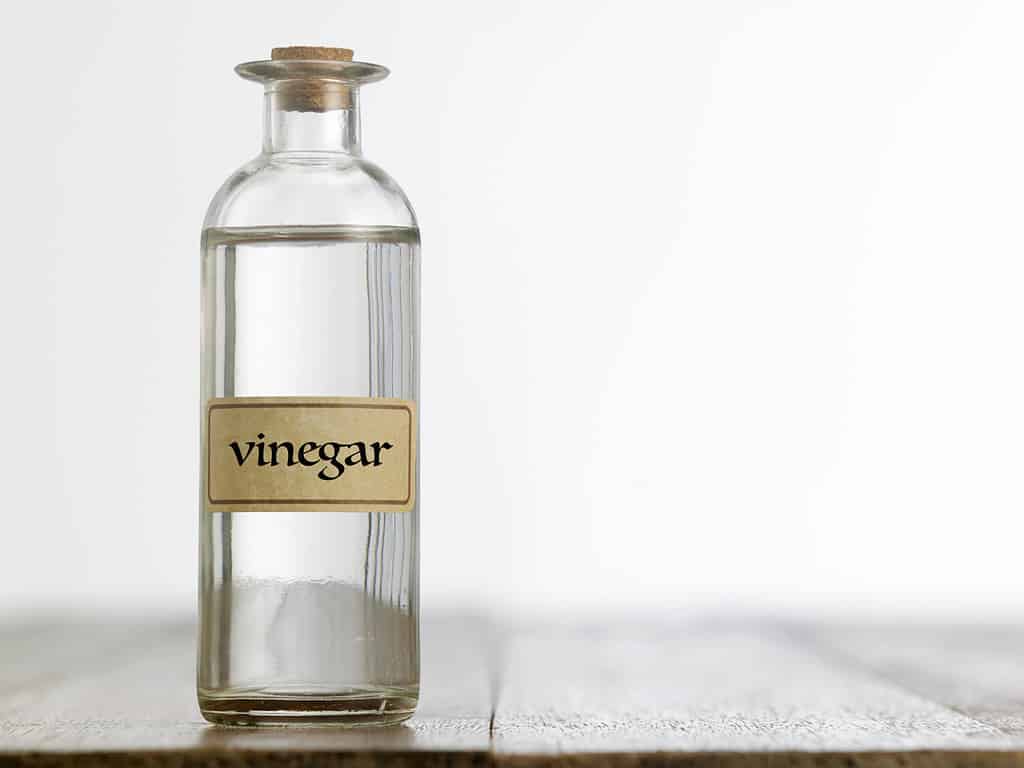
A little vinegar, and you can pickle blueberries for a tangy, sweet, and slightly strange topping or snack.
©focal point/Shutterstock.com
We totally get it. This is a strange one but just trust the process. Pickled blueberries are sweet and tangy, and they can be used as a condiment, a snack, or even a little dessert. You can pickle blueberries with vinegar, sugar, salt, and various spices and herbs and store them in jars in the refrigerator or on the shelf. Pickled blueberries can last for several months or even a year if properly canned. One recipe creator’s favorite way to serve them? Over some goat cheese and crackers! Sounds fantastic. Here are some interesting recipes we found:
- Red Wine-Thyme Pickled Blueberry Recipe: This recipe uses red wine vinegar, water, sugar, salt, shallot, black peppercorns, thyme sprigs, bay leaves, and lemon peel to pickle the blueberries. The result is perfect for meats, cheeses, or salads.
- Pickled Blueberries Recipe: This recipe uses white or champagne vinegar, sugar, salt, and water to pickle the blueberries. This recipe is probably the most simple of them all and can be used as a basic go-to.
- Quick-Pickled Blueberries: This recipe uses white vinegar, sugar, salt, and peppercorns to pickle the blueberries. The result is a quick and easy pickled blueberry that can be ready in a few hours. Quick pickling is a home classic that can give you the tangy sweetness (with some vinegary bite), just fast!
The photo featured at the top of this post is © Subbotina Anna/Shutterstock.com
Thank you for reading! Have some feedback for us? Contact the AZ Animals editorial team.







